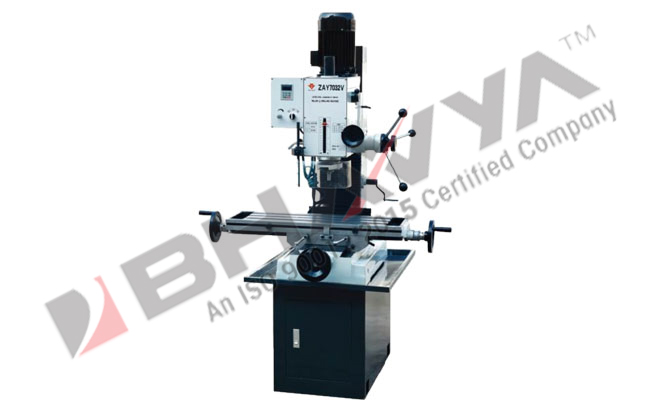A Drilling and Milling Machine is the most useful tool for cutting metal parts, such as drill bits and bolts. These machines offer different features, such as cutting horizontally and vertically. Although drills are an ideal choice for beginners, milling machines are more complex, offering computerized accuracy and advanced cutting capabilities. Here are some factors to consider when choosing a drill and milling machine. Read on to find out more.
Power Requirements of Drilling and Milling Machine
Power requirements for drilling and milling machines are calculated by calculating the speed and feed rate. Drill presses and milling machines are different but have similar features. They both make holes but cut differently. Drill presses are more affordable but do not work as well with large diameter or wide holes. Drill presses can also cut into various surfaces including wood and plastic. The latter is ideal for cutting metals that are too thick or too thin to fit.

What are Capabilities of Drilling and Milling Machine?
The capabilities of a drilling and milling machine should be carefully considered to maximize the output and efficiency of your operation. For instance, drilling and milling machine can process flanges and webs at the same time. This combination of milling and drilling can improve production by cutting down on the number of set-ups and operational costs. Drilling machines include automatic tool changers with stations that can accommodate many tools. Furthermore, automatic tool changing can eliminate manual labor, which is also beneficial for further processing.
Both types of machines have their benefits and drawbacks. While drilling requires a rotating tool to drill, milling machines make use of cutting tools on both sides of the workpiece. Both drill presses and milling machines have draw bars to secure the cutting tools, tool holders, and collets.
What are Feed Rates of Drilling and Milling Machine?
Speed and feed are two different velocities used in machine tool practice. They are commonly considered in tandem and affect each other’s effects. However, each can also be considered independently. In milling and drilling, feeds represent the rate at which a cutting tool can move across the workpiece. Feeds per revolution are usually expressed in mm/min. These calculations are very important for achieving precision results.
The feed rate for a drilling and milling machine varies depending on the hardness of the material being drilled and the type of drill used. Generally, high-speed steel and carbide drills are used in industry. Carbide units are discussed later. In addition to speed, feed rate also affects hole circularity. So, when choosing a feed rate, keep these things in mind. High feed rates are associated with high TF, while low feed rates are beneficial for achieving a quality hole.
What are the Accessories of Drilling and Milling Machine?
Drill and milling machine can be used to perform various types of operations. This type of machine is suitable for drilling, milling, boring, and grinding. This machine can be controlled by a belt drive, and it is suitable for drilling and milling common materials such as wood and metal. Most models can be automatic longitudinally moved, and the structure is reasonable. They are easy to maintain, too. Listed below are some of the accessories available for drilling and milling machines.
What is the Cost of Drilling and Milling Machine?
Depending on the size and features, a drilling and milling machine can cost as little as five hundred dollars, or as much as $150,000. Typically, milling machines are used to produce flat pieces, cut items to size, and create features other than round holes. Drill presses, on the other hand, are used to make holes quickly and cheaply. Compared to milling machines, drilling presses use less energy and produce higher-quality work.
The Bottom Line
While a milling machine’s computer adds to the price, a drill does not need a computer to operate. Drills also don’t need to be as complex and are easier to operate. Using a drill requires fewer adjustments and can be used by anyone. Moreover, drills are portable and do not require a computer, so they’re cheaper than milling machines. A drill press is easier to operate and is much easier to transport.





